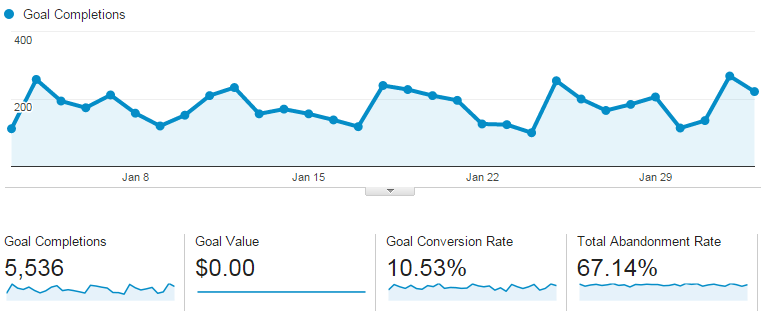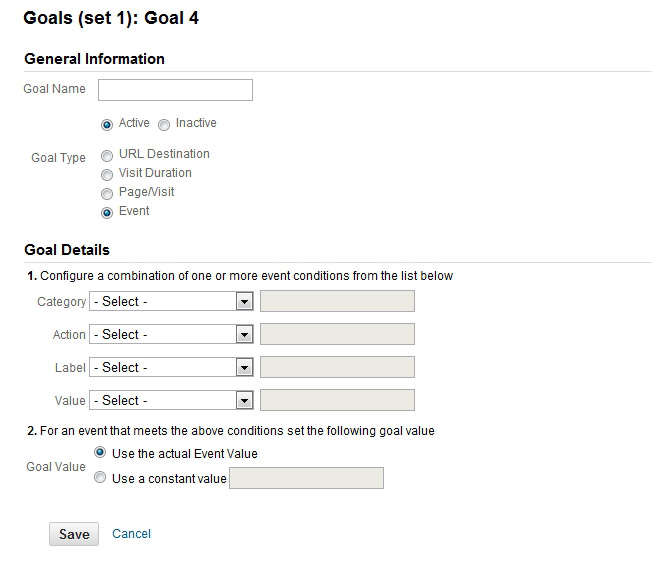Recognizing What Data Is Google Analytics Goals Unable to Track
Recognizing What Data Is Google Analytics Goals Unable to Track
Blog Article
Demystifying Google Analytics Limitations: Discover What Data Goals Can not Track
In the realm of electronic analytics, Google Analytics stands as a powerful tool that offers important understandings into internet site performance and customer behavior. From the intricacies of customer interaction with dynamic material to the complexities of cross-device user journeys, these restrictions lost light on areas that may continue to be covered from traditional analytics perspectives.

User Communication With Dynamic Web Content
Customer interaction with vibrant material plays a crucial function in recognizing customer actions on sites and enhancing the general customer experience. Dynamic web content refers to aspects on a website that can change without the need for a complete page reload. This consists of interactive components such as pop-ups, sliders, kinds, and videos that reply to individual actions in real-time. By tracking user communications with dynamic web content, web site proprietors can acquire valuable insights right into customer involvement, preferences, and actions.
Google Analytics supplies different tools to track individual communications with vibrant material, such as event tracking and online pageviews. Occasion monitoring permits you to keep an eye on specific customer activities, like clicking a button or enjoying a video, supplying data on how individuals engage with vibrant elements. Virtual pageviews can be made use of to track interactions that do not bring about a brand-new web page load, offering an extensive sight of customer interaction with vibrant web content. By analyzing this data, website proprietors can make informed choices to enhance individual experience and drive conversions.
Cross-Device User Journeys
Exactly how can modern-day analytics tools track the complex courses individuals take across numerous tools in their online journeys? Cross-device user journeys offer a significant challenge for monitoring and analyzing customer behavior precisely. As users connect with internet sites or apps making use of different gadgets such as tablets, desktops, and smart devices, it ends up being crucial to comprehend exactly how they move in between these platforms to optimize individual experience effectively.
Google Analytics deals with restrictions in tracking cross-device individual journeys due to privacy problems and technological restraints - what data is google analytics goals unable to track. While it can give understandings right into individual devices' interactions, tracking a smooth user trip throughout several tools continues to be a challenge. This limitation can lead to insufficient data and fragmented customer understandings, making it tough for organizations to create a unified sight of the consumer journey
To address this concern, organizations can utilize sophisticated analytics tools that use cross-device monitoring capabilities, enabling them to gain an extra holistic understanding of user habits. By leveraging these devices, businesses can bridge the gap in tracking cross-device user journeys and enhance their digital methods for a seamless customer experience.
Offline Conversions and Attribution
As companies browse the difficulties of tracking cross-device customer trips, an additional essential element to think about is the realm of offline conversions and attribution in the world of information analytics. While Google Analytics offers beneficial understandings into on-line individual habits, it fails when it concerns tracking conversions that occur offline. This constraint poses a significant obstacle for businesses that have both online and offline sales channels.
Offline conversions, such as acquisitions made in physical stores or via call centers, are necessary to comprehending the total client journey. Without the capacity to connect these offline conversions web link to specific online interactions, services might have a hard time to precisely measure the influence of their digital advertising and marketing initiatives.
To address this void, businesses can explore different solutions such as integrating CRM systems with on the internet analytics devices or making use of unique discount codes that can be traced back to online projects. By bridging the void in between online and offline information, companies can get a more thorough understanding of their clients' behavior and improve their overall marketing approaches.
Individual User Identification
In the realm of data analytics, the capability to accurately identify specific users throughout various on-line touchpoints is a vital challenge for services seeking to individualize and enhance their marketing approaches. While Google Analytics offers beneficial insights into customer habits and communications, it falls brief in making it possible for the identification of specific people because of personal privacy concerns and technological constraints. Google Analytics utilizes special identifiers such as cookies to track customer sessions and actions, but these do not correspond to identifying individual customers in a personal feeling.

Data From Secure Pages
Despite the boosting prevalence of secure web pages on websites, obtaining information from these encrypted sources provides a distinct obstacle for digital analytics platforms like Google Analytics. Protect web pages, suggested by HTTPS in the URL, encrypt data exchanged between the individual's browser and the website's web server to ensure personal privacy and safety and security. While this encryption is essential for securing sensitive information, it additionally postures limitations for tracking customer habits and gathering analytics data.
Google Analytics encounters obstacles in collecting comprehensive information from protected pages because of the encryption procedures in place. Consequently, particular data points such as referral resources, keyword searches, and also some customer communications may not be fully recorded when customers access a site with a safe and secure link. This limitation can impact the accuracy and efficiency of the data analysis, resulting in spaces in recognizing individual behavior and preferences on secure web pages.
To navigate this challenge, electronic analysts may require to explore alternative tracking methods or utilize various other devices particularly designed to gather understandings from secure pages. By adapting techniques to suit these constraints, companies can still derive important analytics despite the restrictions presented by encrypted links.
Conclusion
In verdict, Google Analytics has limitations in tracking user communication with dynamic material, cross-device customer journeys, offline conversions, specific user recognition, and data from safe pages. Regardless of its valuable insights, Google Analytics may not supply a full image of user involvement across various touchpoints.
User interaction with vibrant material plays a critical duty in understanding customer habits on websites and maximizing the general customer experience. By tracking individual interactions with dynamic material, website proprietors can obtain important understandings right into user involvement, choices, and habits.
Google Analytics uses special identifiers such as cookies to track user sessions and actions, however these do not relate to determining individual customers in a personal feeling.
As a result, specific Read Full Report data points such as recommendation resources, keyword searches, and also some individual interactions might not be totally captured when customers access a site with a protected connection.In conclusion, Google Analytics has constraints in tracking customer communication with dynamic content, cross-device user journeys, offline conversions, individual customer identification, and information from safe pages.
Report this page